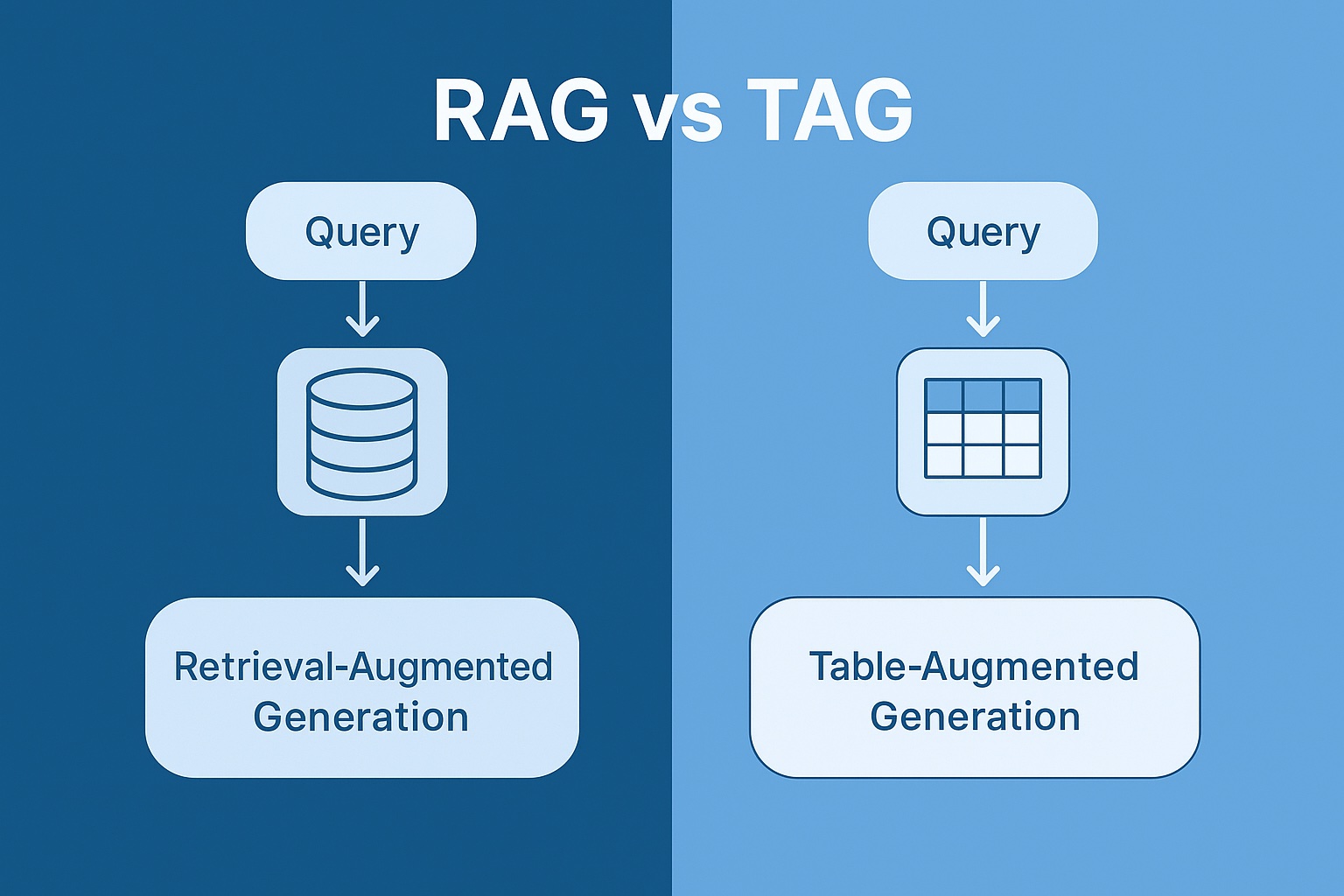Mar 1, 2025
5 min read
1 tags

Over the last year, I’ve spent a lot of time working with clients who want to integrate AI into their enterprise workflows — not just as a fancy tool, but as a real force multiplier. During this journey, two techniques have consistently stood out when it comes to getting accurate, context-aware output from large language models:
Retrieval-Augmented Generation (RAG) and Table-Augmented Generation (TAG).
These aren’t just buzzwords — they’re architectural patterns I’ve seen make or break AI deployments. In this post, I want to share what I’ve learned about both, where they work best, and how we’ve applied them at Infurotech.
Let’s start with RAG. The idea is simple: instead of relying solely on what the LLM was trained on, we retrieve relevant external documents and inject them into the prompt. Think of it as giving your model a custom briefing before it answers a question.
pgvector and let the assistant retrieve relevant snippets dynamically.RAG is perfect when:
Then there's TAG — Table-Augmented Generation. Most organizations (including ours) are sitting on structured data goldmines: spreadsheets, reports, dashboards. Traditional LLMs struggle with tables, but TAG is a way to feed these structures to models intelligently.
We used TAG to help a fintech client:
TAG shines when:
| RAG TAG | ||
| Best for | Unstructured data (docs, wikis) | Structured data (tables, spreadsheets) |
| Input type | Natural language + documents | Tables + structured data |
| Use cases | Chatbots, support bots, knowledge QA | Report generation, KPI summaries, BI bots |
| Complexity | Medium (needs retrieval infra) | Medium (needs table formatting or encoding) |
| Risk of hallucination | Low (grounded in documents) | Low (data-driven) |
If you’re leading a tech team or planning an AI integration, here’s what I’d say:
As CTO, my job is to make sure we choose the right tools for the right context, not just chase hype.
RAG and TAG are both incredibly valuable — but only when matched to the problem they’re designed to solve.
At Infurotech, we’ve deployed both approaches in live enterprise environments — from helping execs navigate compliance docs to turning spreadsheets into natural conversations.
The future of AI in the enterprise won’t be about one model — it’ll be about how intelligently we augment it.
If you’re exploring RAG, TAG, or building AI systems that are more than demos, feel free to reach out. We’ve walked this path — and we can help shorten yours.